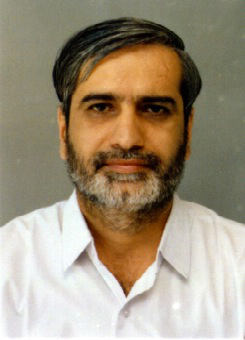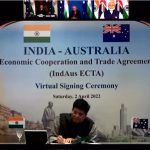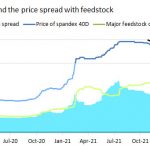 I recently came across a number of reports and statements by leading export related experts related with textile and clothing claiming that China is set to provide a lucrative destination for Indian exports of these items. Obviously, I was pleasantly surprised to read that the dragon, World’s Factory and Clothier to the World, is going to look to India for procurement as it finds increasingly difficult to meet its own demand. A deeper look provided me the information that China was looking for huge quantities of grey fabric from various countries and Indian exporters were desperately trying to capture some share of the Chinese demand for the grey fabrics. At least this is what one tends to believe after reading the report of the 2015 Imported Yarn & Grey Fabric Forum held in June this year. More than 300 suppliers attempted to lure Chinese buyers of grey fabric. The Cotton Textiles Export Promotion Council (Texprocil) was so enthusiastic that it fielded an outsider to make an impressive presentation on behalf of Texprocil so that the Chinese authorities and buyers could be convinced to buy cotton yarn and grey fabric from India. “(Texprocil) has been successfully using this platform to popularize advantages of using Indian yarn and grey fabric for conversion into value added textiles by the Chinese enterprises,” said its post event report.
I recently came across a number of reports and statements by leading export related experts related with textile and clothing claiming that China is set to provide a lucrative destination for Indian exports of these items. Obviously, I was pleasantly surprised to read that the dragon, World’s Factory and Clothier to the World, is going to look to India for procurement as it finds increasingly difficult to meet its own demand. A deeper look provided me the information that China was looking for huge quantities of grey fabric from various countries and Indian exporters were desperately trying to capture some share of the Chinese demand for the grey fabrics. At least this is what one tends to believe after reading the report of the 2015 Imported Yarn & Grey Fabric Forum held in June this year. More than 300 suppliers attempted to lure Chinese buyers of grey fabric. The Cotton Textiles Export Promotion Council (Texprocil) was so enthusiastic that it fielded an outsider to make an impressive presentation on behalf of Texprocil so that the Chinese authorities and buyers could be convinced to buy cotton yarn and grey fabric from India. “(Texprocil) has been successfully using this platform to popularize advantages of using Indian yarn and grey fabric for conversion into value added textiles by the Chinese enterprises,” said its post event report.
Unfortunately, these are the same experts who, until a few years ago, used to insist on exporting the value added products like garments and high-ended branded clothing. Exporting cotton yarn and grey fabric was regarded as a sign of inefficiency, if not foolishness. But the things seem to be changing very fast in the global context and people are ready to buy and/or sell anything that earns them a quick and easy profit. So, why process the fabric and get caught by the pollution control inspectors for violating the environmental laws; why take the burden of stitching the fabric employing hundreds and thousands of illiterate workers and get subjected to draconian labor laws and CSR related NGOs?
India has to undertake this kind of tough marketing task of selling cotton yarn and grey fabrics to China is not understandable. This is particularly so because China has been buying most of its requirement of grey fabrics from Pakistan. And we know the kind of problems, both cost- and govt.-related; Pakistan is facing badly impacting its export ability to its best friend. This obviously points to the difficulties of Chinese importers in getting the required quantities of the grey fabric and also the reason why China is so keen on looking for alternatives. Under such a scenario, the best and easiest supplier for China cannot be any other country than India. But as it is the natural rule of marketing that if a seller goes to a buyer with a begging bowl for orders, the buyer is going to dictate the terms. We can see this clearly how the Chinese officials successfully hypnotized Indian officials to believe that although Indian exporters offered high quality and competitive prices, the government was not serious enough for the export promotion. The end result is that exporters and their trade associations are now engaged in intense lobbying with the government about what they were told by the Chinese. “The major impediment in increasing market share of India is tariff the disadvantage of 10% compared to zero duty for import of grey fabrics from Pakistan.” So the Chinese want India to take up their case with their government so that they could import grey fabric from India at zero rate of duty.
Indian experts feel that since China is a growing market for textiles and clothing items with a total import of US$36.01 bn, India’s stands a good chance to boost exports significantly from the current US$ 3.6 bn which is less than 3% share of China’s total imports. Chinese producers are slowly but steadily coming out of the low cost manufacturing and exporting to much value added by adding state-of-the art textile machinery. As far as low end products are concerned they are either moving their production facilities to low cost countries like Vietnam, Taiwan, Myanmar etc. or luring exporters from India showing them big fat profits.
I am sure the above kind of unnecessary export promotion efforts have gone un-noticed by the PMO otherwise these high ranking officials and experts would have certainly got a reasonable dressing down for going against the theme of ‘Make In India.’
G.D. JASUJA
Managing Editor




